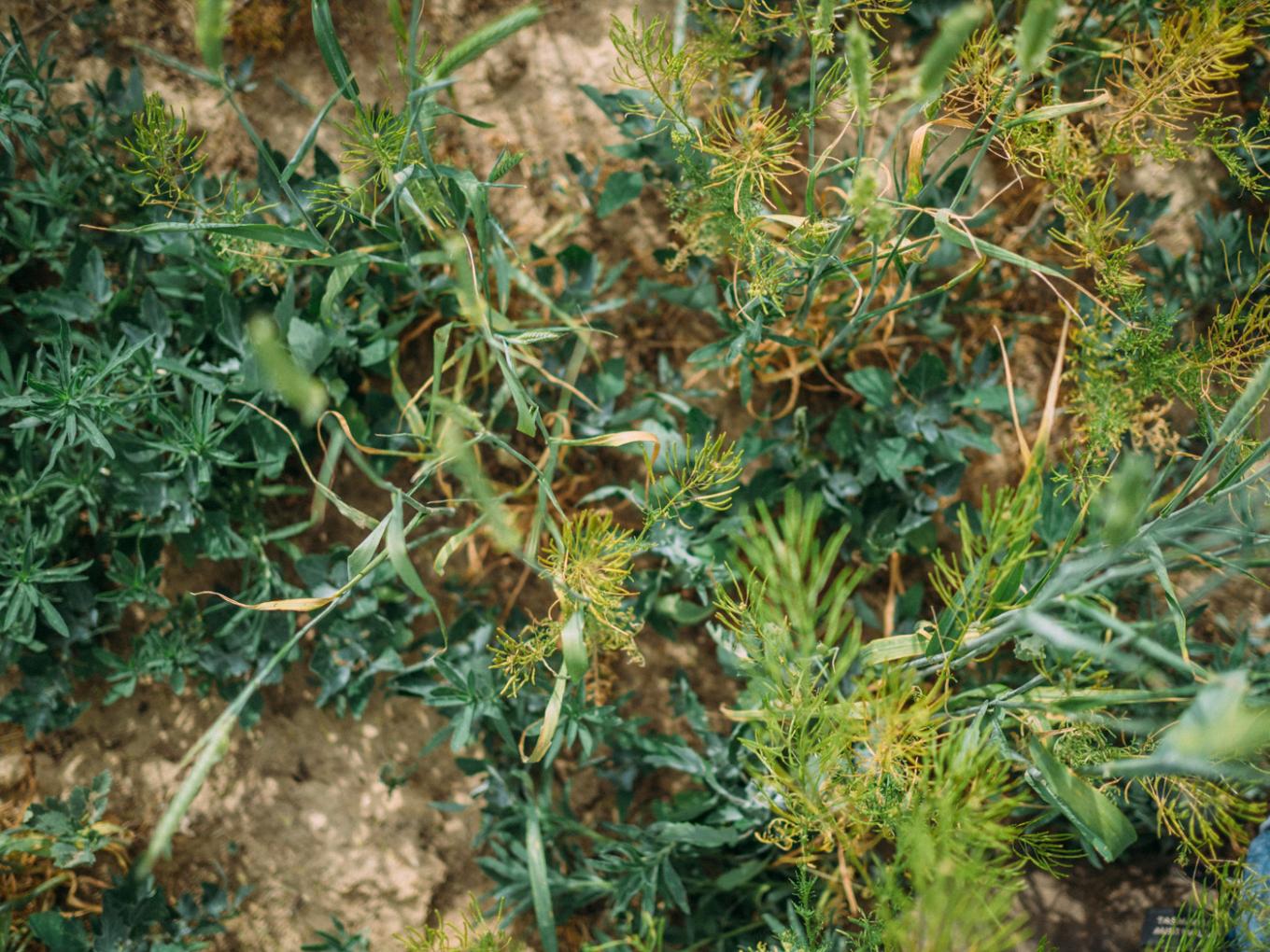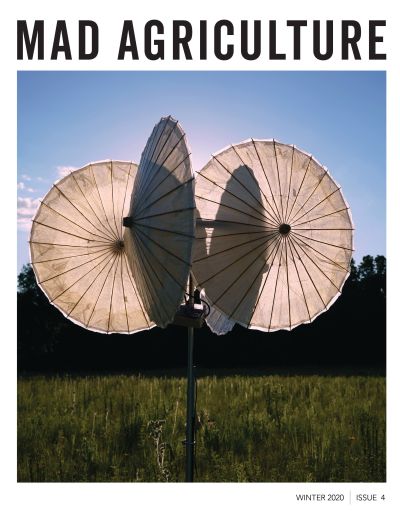
The Mad Agriculture Journal
From the Fellows: Defining Regeneration
Published on
November 30, 2020
Written by
Katie Bartel
Colleen Johns
Hi! We are Colleen and Katie. Last year, we enrolled in the Master’s of the Environment program at the University of Colorado Boulder. The past year has been a whirlwind. We’ve taken a journey through food systems, waded through regenerative theory, helped co-author a peer-reviewed article on the definitions of regenerative agriculture, and consulted food brands on regenerative supply strategy. Looking back, it is hard to believe all of this has happened in just seventeen months.
We first heard of regenerative agriculture during our first semester, while taking Introduction to Food Systems. In fact, it was Phil Taylor who introduced the term to us. Phil described an agricultural means for healing the soil that years of industrial and extractive farming practices had degraded. He called this regenerative agriculture, which he further explained as working with the nature of the land, the people who tended to it, and the communities it benefited. Following this discussion, we both felt called to join the regenerative agriculture movement, but were unsure how.
Just a few weeks later, a call to action presented itself. We received an email from Dr. Pete Newton, a professor of Environmental Studies, asking for help “to disentangle, in a systematic way, the many definitions and interpretations of regenerative agriculture.” We couldn’t have been more overjoyed. Not only were we able to contribute to the field of regenerative agriculture, but we were happy to learn we were not the only people with questions about regenerative agriculture. Along with Lee Frankel-Goldwater, an ENVS PhD student, and Nicole Civita, a professor lead of the Sustainable Food Systems (SFS) specialization, we began digging into the literature to find clarity.
Research was the perfect start to our journey. Pete is well versed on the state of our global environment. Much of his work focuses on agriculture’s significant environmental footprint. His research explores the causes and consequences of agriculture on economy and land use. Agriculture is responsible for one third of global land use and contributes about 15% of global greenhouse gas emissions (more like 25%, if you include agriculturally-driven land use change). These consequences, which are expected to worsen in response to increases in both population and per capita demand, drive many actors in the food system to seek more sustainable methods of food production.

Regenerative agriculture is often proposed as a solution to these problems. Supporters of regenerative agriculture are numerous and momentum is building around this work. The movement is represented by food scientists, researchers, farmers, retailers, indigenous leaders, brands, agronomists, evangelists, government officials, musicians, poets and more. Institutions like Project Drawdown, the Rodale Institute, and the Intergovernmental Panel on Climate Change all consider regenerative agriculture in their strategies for change. But, for all the recent attention regenerative agriculture has received, no legal or regulatory definition exists. A shared understanding of the term remains somewhat elusive. The fundamental question of our research project was, “How have different scholars and practitioners defined regenerative agriculture?” In answering this question, we hope to help bring practitioners closer to an understanding of the term that can inspire more effective action.
The team spent several months working on the paper. We collected and reviewed data from 229 journal articles and 25 organizations, specifically looking for their respective definition or description of regenerative agriculture. In October 2020, the paper was published in the peer-reviewed journal Frontiers in Sustainable Food Systems. This paper provided three broad findings.
First, our team found that the term was used by many different people to mean many different things. There was no agreement on a definition, and some definitions were mutually incompatible, meaning that two people could be having a conversation about regenerative agriculture and be talking about very different concepts! To avoid unnecessary confusion or talking past each other, the team proposes that every user of the term define it clearly and unambiguously for their own context and purpose.
Second, some people focused their definitions on the agricultural processes within regenerative agriculture. For example, crop rotation, livestock integration, and minimum tillage were frequently mentioned processes. Others focused their definitions on the outcomes they believed regenerative agriculture achieved, such as carbon sequestration, increased biodiversity, and reduced nitrogen run-off. And some defined the term by including both processes and outcomes. In the paper, our team discusses the implications of definitions based on processes, outcomes, or both - including implications for a regenerative agriculture certification program, and for paying farmers for sequestering carbon.
Lastly, the team found that the term regenerative agriculture was commonly conflated or used interchangeably with other terms, such as carbon farming, sustainable agriculture, alternative agriculture, and agroecological farming. This can present a challenge to broad scale adoption, and to the development of effective policy.
After our research, we wanted to move beyond thinking to join the movement, and put ideas to work. In the Winter of 2020, we joined Mad Agriculture as fellows with our colleagues, Lauren Dunteman and Randy Pistacchio. This fellowship, revolving around the concept of regeneration more broadly, also comprised part of our Capstone Project as graduate students in the Masters of the Environment program at CU Boulder. Our work was led by our Capstone Partners, Phil Taylor from Mad Agriculture and Luke Smith from Terra Genesis International (TGI).
The fellowship between Mad Agriculture and TGI was initiated as an opportunity for new supply practitioners to learn about regeneration and work with brands interested in pursuing regenerative supply systems. We partnered with two food brands, Quinn Snacks and ORIGIN Milk, to shift their supply systems to become more regenerative.
To prepare for this work and learn the concept of regeneration, we participated in resourcing sessions with our Capstone partners. These resourcing sessions presented a slightly different understanding of regenerative agriculture than we had seen in the research paper. The sessions also expanded on the definitions and descriptions provided by other papers. Though some articles and organizations studied in the paper defined regenerative agriculture by a list of processes, outcomes, or a combination of both, the resourcing sessions in our fellowship presented it as an approach to agriculture based on the broader concept of regeneration. Regeneration is as much a paradigm shift that begins with self-transformation, as a lifestyle that invites both a new and ancient way of being in the world.
The resourcing sessions introduced the concept of regeneration as both a paradigm and a capability. As a paradigm, regeneration is a way of thinking that is shaped by knowledge of the nature of living systems. As a capability, regeneration is the power to view and work with life based on this knowledge. It can be thought of as a lens through which we view our experiences. In this view, regeneration is not a checklist of processes or outcomes, but rather a lens through which we see the world, its workings, problems, and possible outcomes differently. We become aware that all work, all life, all beings have a “wholeness” and a unique essence, just as living systems do. This awareness allows approaches to business and agriculture to take a new shape— one that goes beyond just “doing good” and instead enhances the system’s ability to develop in the same complex, continuous, unique way of the ultimate living system- nature itself. A blanket, fixed checklist of practices or measurable outcomes could not possibly encompass the unique, ever-evolving potential of a business or agricultural system.
The varying definitions and descriptions discovered through our research suggested that a single definition of regenerative agriculture is necessary to create clarity on the term. An explicit, single, agreed upon definition could enable farmers, businesses, and researchers to more easily measure and monitor regeneration. Clear guidelines would help companies claiming regenerative practices and outcomes, and could be held accountable to a specific definition and required criteria.
At the same time, the regenerative approach learned through the fellowship taught that a single definition could disrespect the unique essence of each individual. Through this regenerative lens, we understand any given definition is not inherently right or wrong, but rather speaks to the individuality of the user of the term. This alternative understanding of regenerative agriculture actually reinforces one of the proposals made by the research team in the paper: that each user of the term regenerative agriculture should define it clearly and unambiguously for his or her own unique purpose.
Therefore, so long as users define their unique interpretation of the term clearly and unambiguously, the meaning and impact of the term can be maintained. This ability to create a clear, unambiguous, individual definition of regenerative agriculture honors the unique capabilities of the ultimate stewards of the land - the farmers. It also creates a movement that everyone can participate in, which is sorely needed for humanity to mend the bond with each other and the Earth.
To read the research team’s paper in its entirety, please visit https://www.frontiersin.org/articles/10.3389/fsufs.2020.577723/abstract
To learn more about the Regenerative Supply Web Weaving Capstone project, please visit https://www.colorado.edu/menv/academics/capstone-projects/2020-capstone-partners/regenerative-supply-web-weaving
